Markers to Deter Human Intrusion into Nuclear Waste Isolation Plants
This place is not a place of honor.
No highly esteemed deed is commemorated here, nothing valued is here.
What is here was dangerous and repulsive to us.
The danger is to the body, and it can kill.
The great Pyramids of Giza were built about 4,500 years ago by the Ancient Egyptians. Since then, civilizations have undergone transformations, languages and religions have changed. Despite the fact that Egyptian hieroglyphs were successfuly deciphered, there is still no elaborate explanation why the pyramids were built with the prevaling explanation being religious purposes. Even though multiple warnings about curses were encountered, the tombs of Pharaohs that were once sealed never to be opened again, were disturbed.
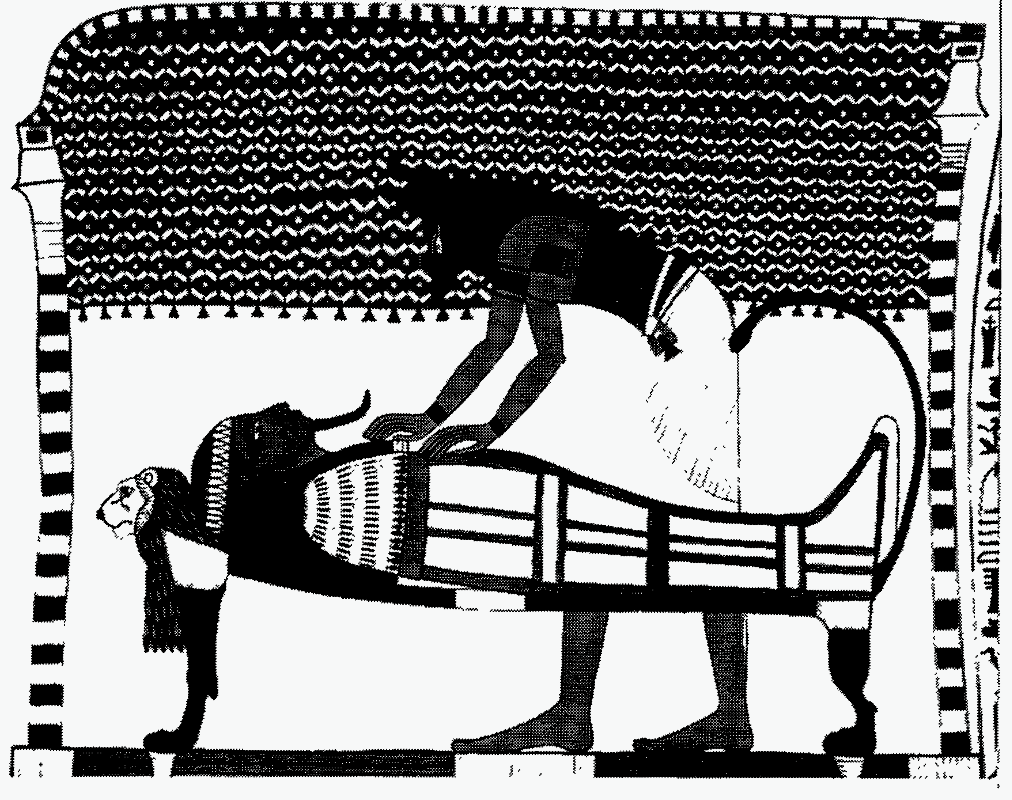
Spent fuel from nuclear reactors remains hazardous for over 10,000 years. Deep geological repositories are used for permanent disposal of nuclear waste, where it is isolated from the environment. However, continued population growth and increasing resource consumption presents a scenario in which societies thousands of years from now would be tempted to make intrusions into such plants. The problem of preventing human intrusion in the far future was studied in the 1990s at the Sandia National Laboratories producing a comprehensive report titled “Expert Judgment on Markers to Deter Inadvertent Human Intrusion into the Waste Isolation Pilot Plant”, which proposed markers for the WIPP (Waste Isolation Pilot Plant) repository in New Mexico when it is permanently sealed.

Message
The report outlines four levels of complexity for conveying the message:
- Rudimentary Information: "Something manmade is here"

- Cautionary Information: "Something manmade is here and it is dangerous"


Proposed faces
- Basic Information: Tells what, why, when, where, who, and how
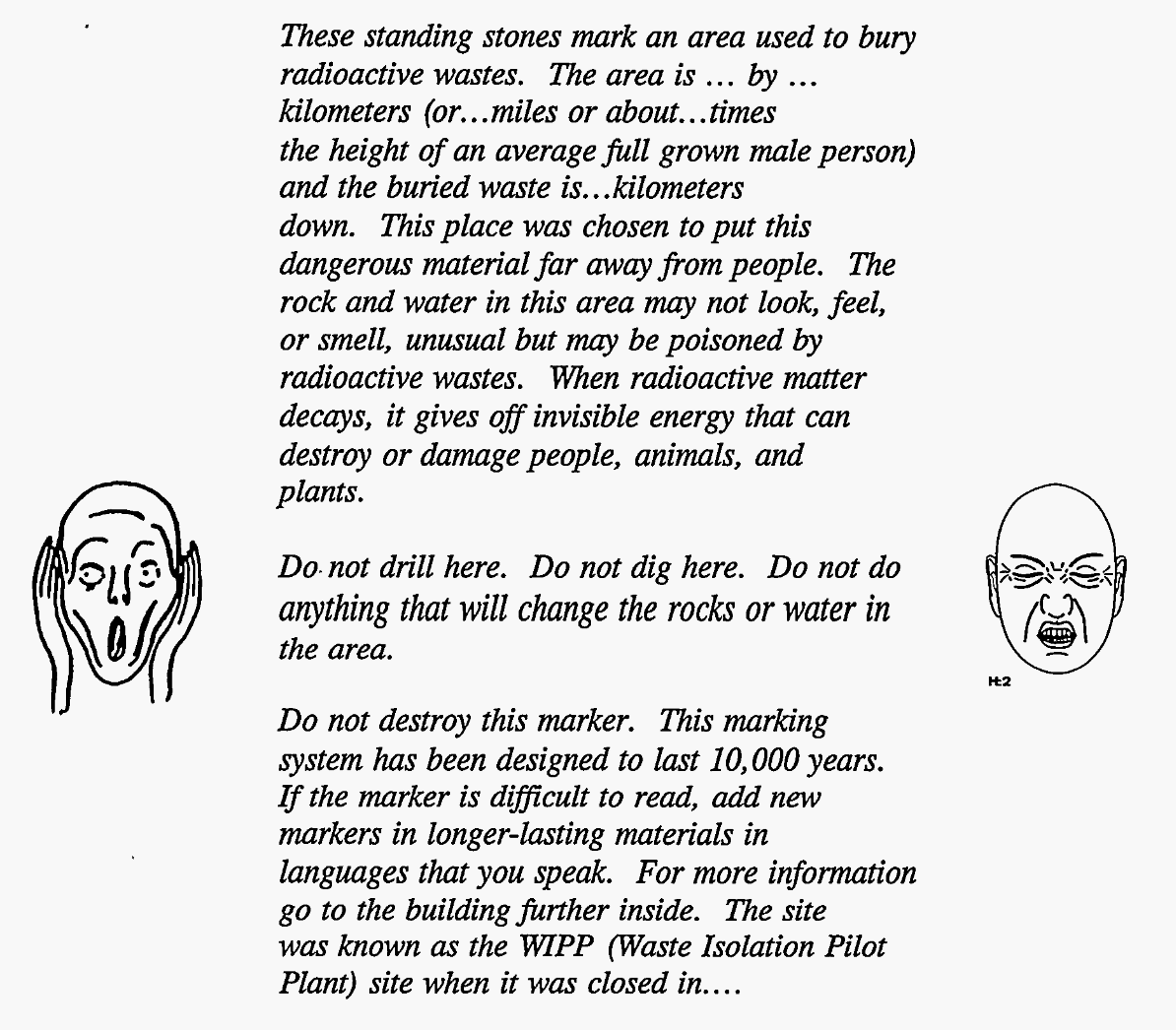
Possible text
- Complex information: Highly detailed written records, tables, figures, graphs, maps and diagrams
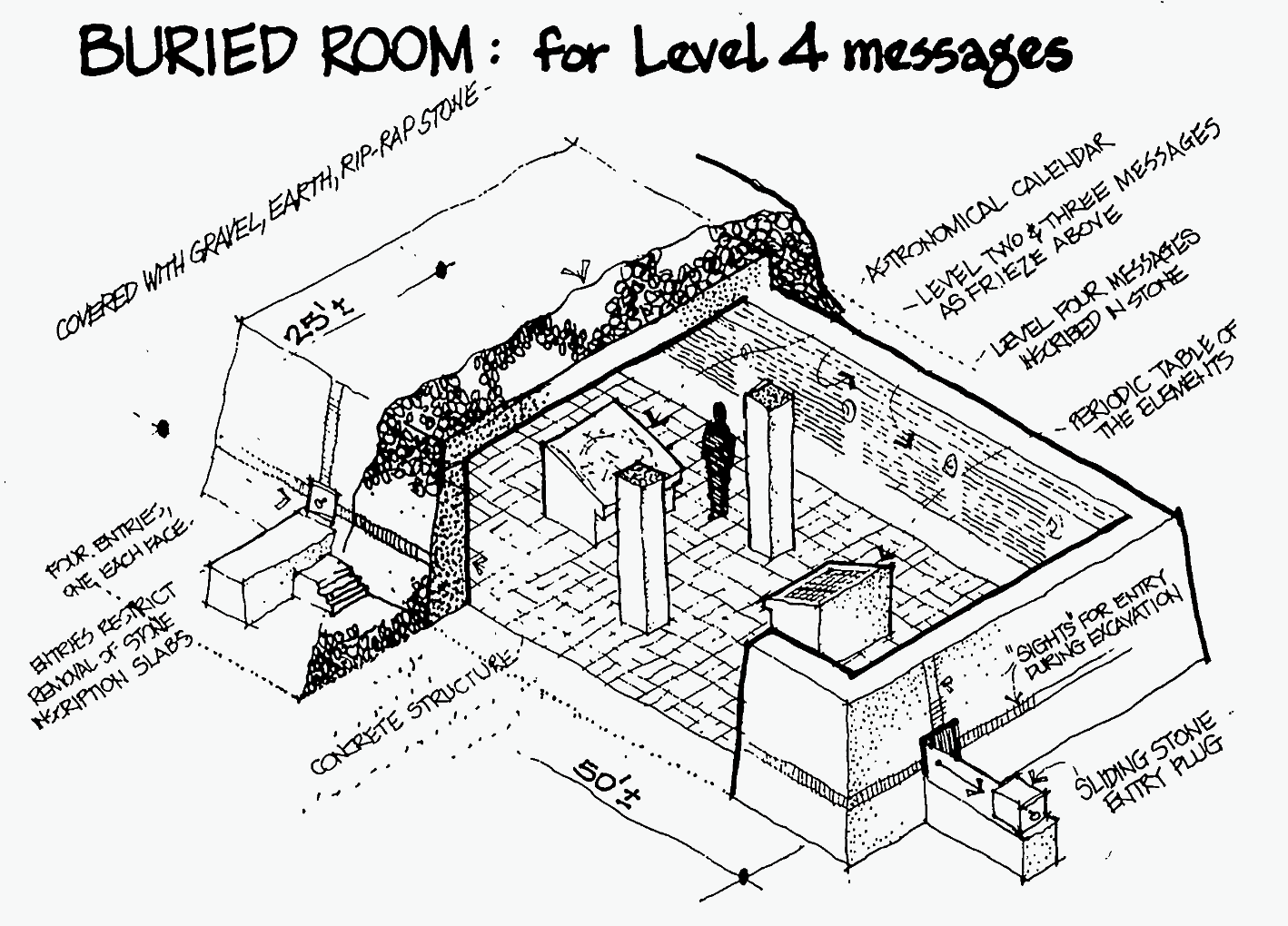
Level IV information is located in buried rooms
The messages are repeated seven times: in the six languages of the United Nations (Arabic, English, Spanish, French, Russian, and Chinese), Navajo and blank. The blank area is so the message can be inscribed in another language when these grow too ancient to read comfortably. Apart from conveying information lingiustically, the message should be represented by the most universally understood symbols using physical features and pictograms. The warnings, diagrams and graphs should appear unambiguous and as clear as possible.
Levels I, II can be faciliated using physical markers by designing relevant architecture. The Level III, IV information will be contained in rooms and buried chambers.
Above-ground structures
Requirements for the structures:
- Message conveyance. The structure should be understood as a message conveying the following:
This place is a message… and part of a system of messages… pay attention to it!
Sending this message was important to us. We considered ourselves to be a powerful culture.
This place is not a place of honor… no highly esteemed deed is commemorated here… nothing valued is here.
What is here was dangerous and repulsive to us. This message is a warning about danger.
The danger is in a particular location… it increases towards a center… the center of danger is here… of a particular size and shape, and below us.
The danger is still present, in your time, as it was in ours.
The danger is to the body, and it can kill.
The form of the danger is an emanation of energy.
The danger is unleashed only if you substantially disturb this place physically. This place is best shunned and left uninhabited. - Uniquness. The site should be distinguishable from all other types of places by being massive and ominous, emphasizing importance.

Pyramids of Giza
- Ugliness. Avoiding elegance or artistic appeal will prevent suggestion that the place is commemorative or highly valued by the culture that made it. It’s not a treasure, but the complete opposite. The structure must reject symmetry and use shapes that hurt the body and communicate danger.
- Hostility. The place should reject rather than embrace to prevent it being used for dwelling or farming.
- Durability. The structure must be designed to be long-lasting resilient against vandalism and nature.

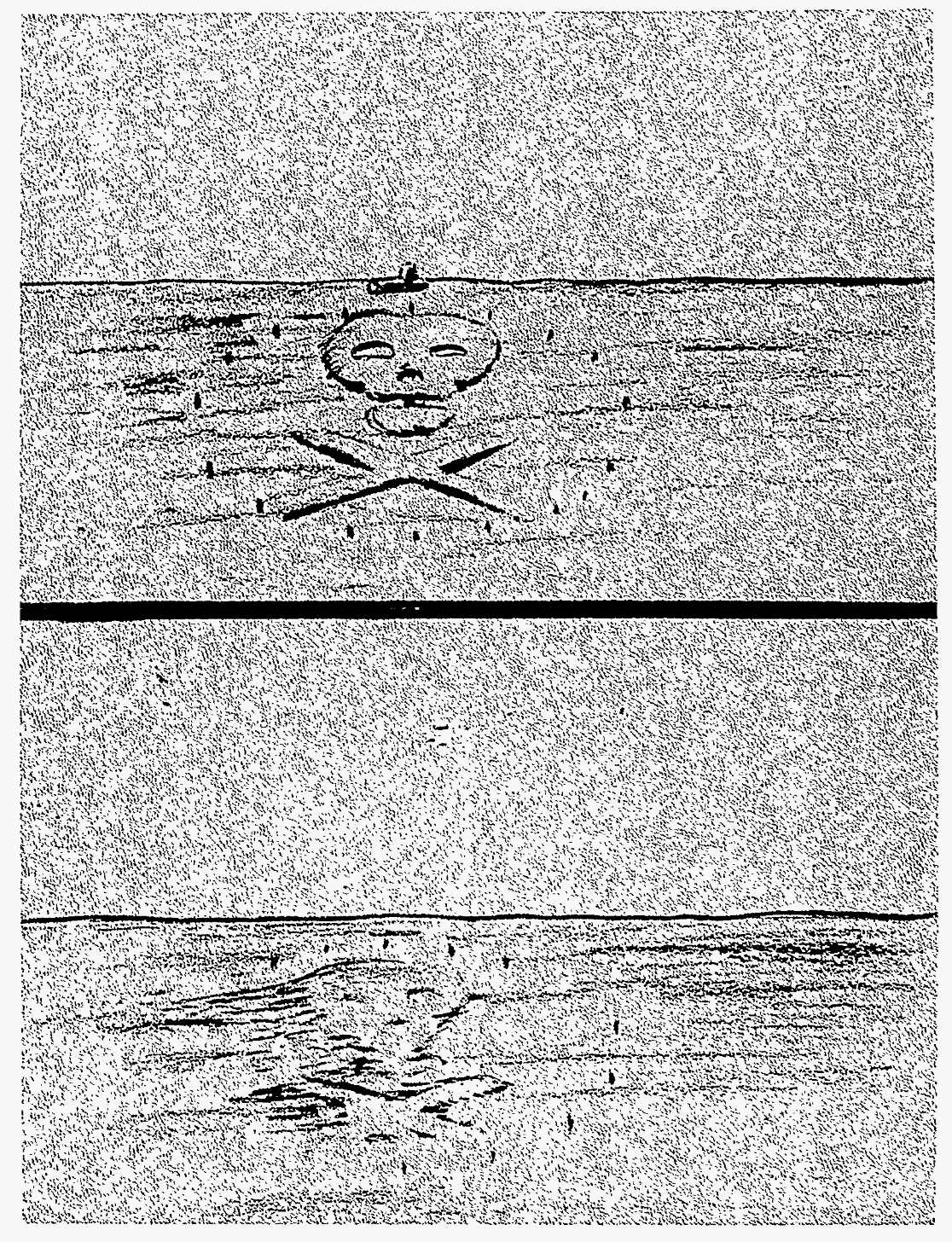
Fading
- Minimization of material value. Not easily usable materials shaped in odd forms (that cannot be assembled to fill space) should be used to reduce their desirability as a building material.
- Immovable. The ratio of work required to remove the structure to that required to make it should be maximized.
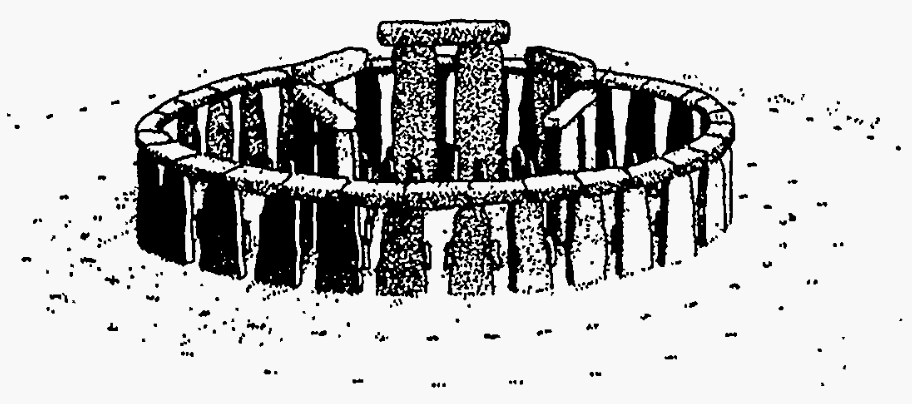
Blocks used in stonehenge (~5000 years old) weigh upto 46 tonnes
The study group had come up with following ideas for the site’s architecture:
Spike Field: the concrete spikes suggest danger to the body like thorns, spikes and lightning.
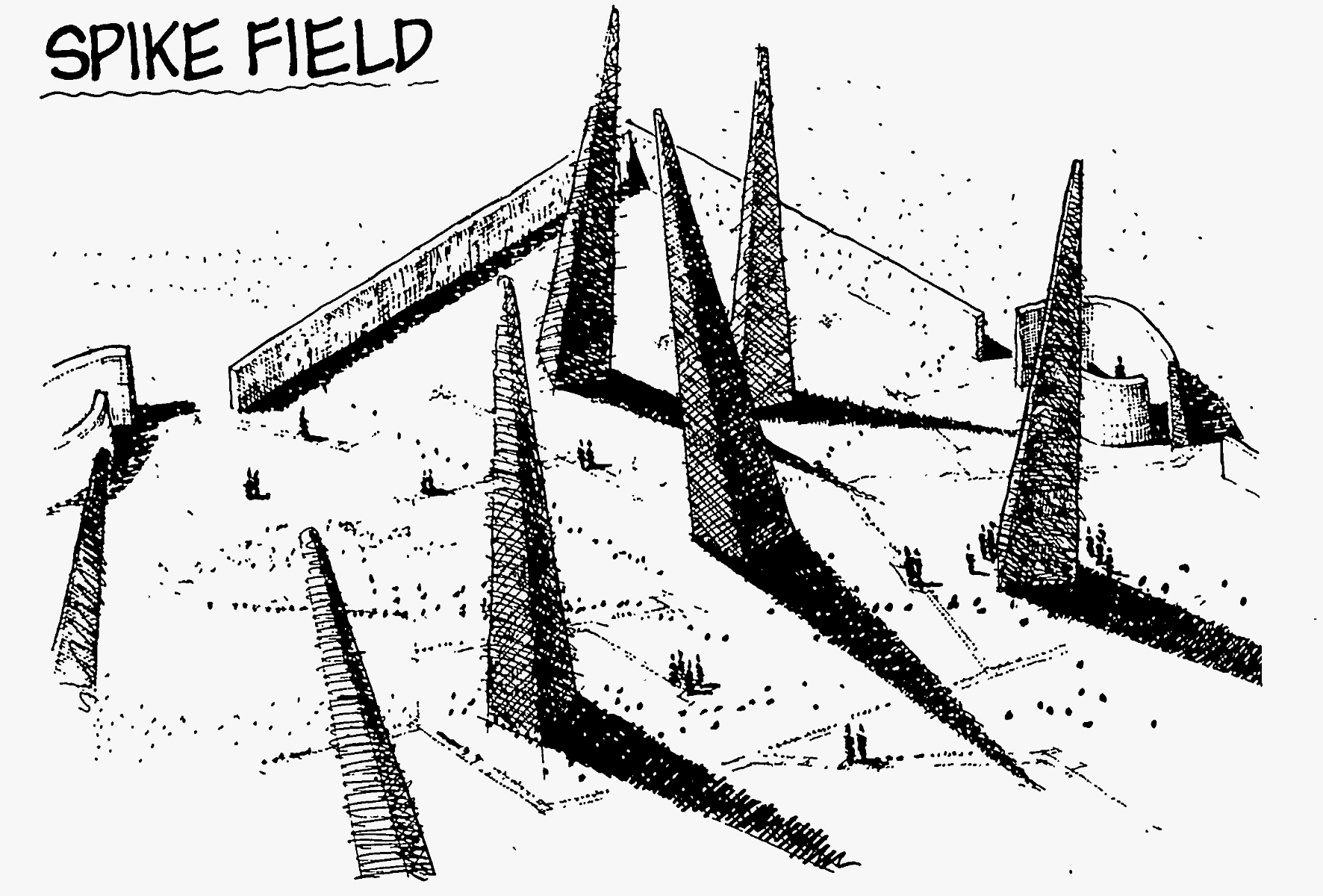
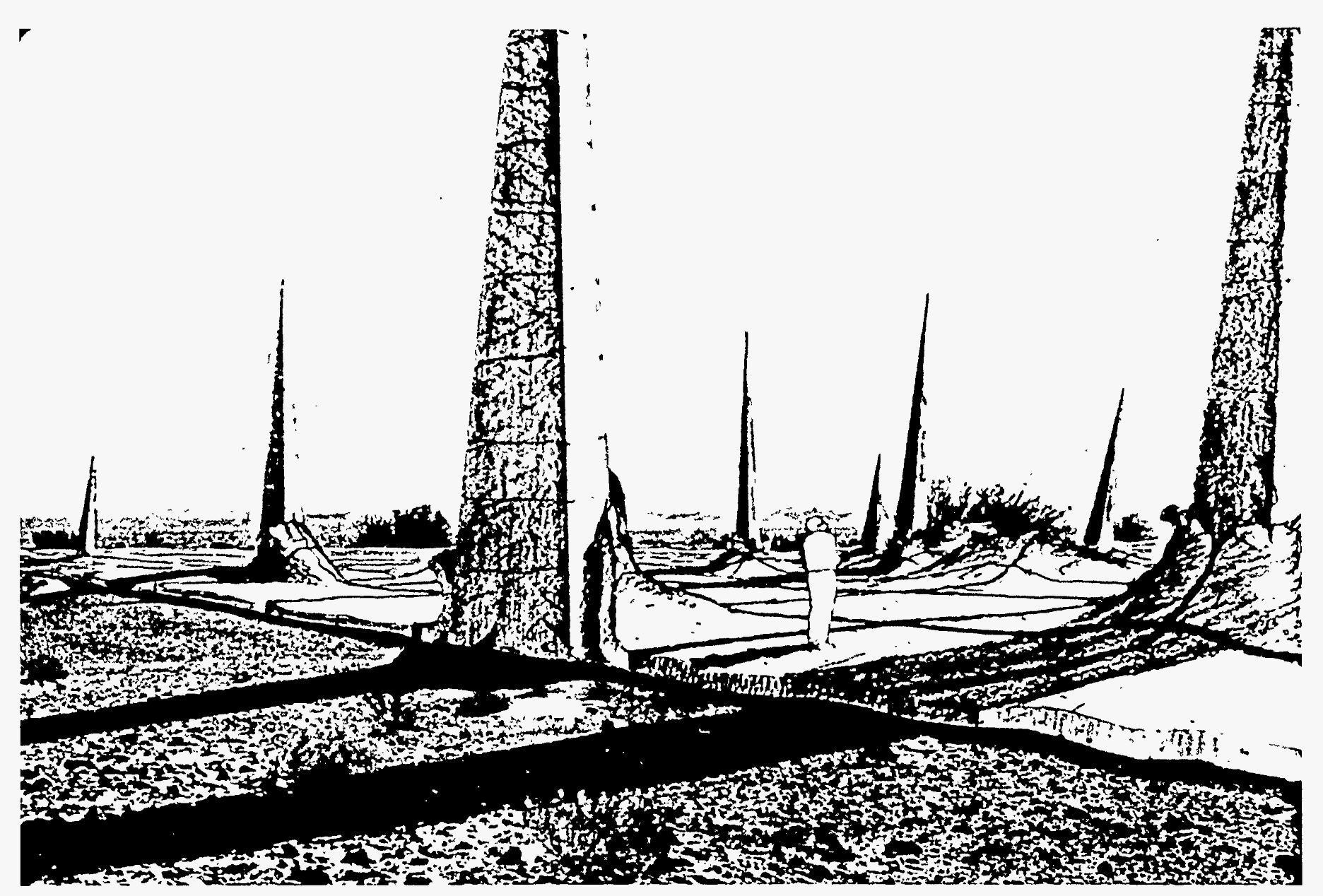
Spike Field from ground level
Menacing earthworks: massive lightning-shaped earthworks radiating from the center.

Black hole: a black slab representing a useless place: land removed from use with nothing left behind. It gets extremely hot as it’s located in a desert.

Rubble landscape: a pile of large-stone rubble, which is hard to walk on and difficult to bring machinery onto. It is a place that feels destroyed, rather than made.
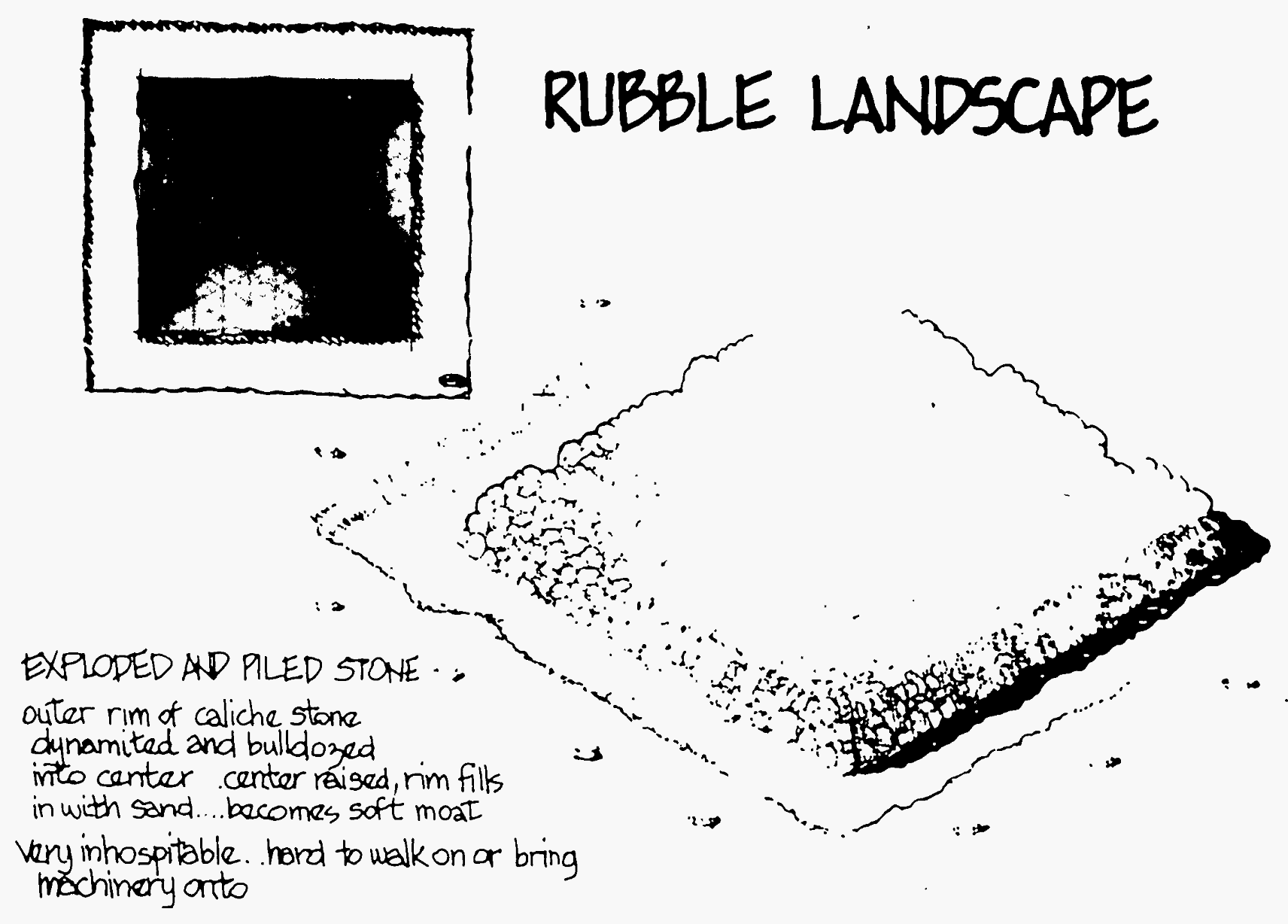
Forbidding blocks: a grid of irregular and distored cubes. The space between the blocks is too narrow to live in and very hot.
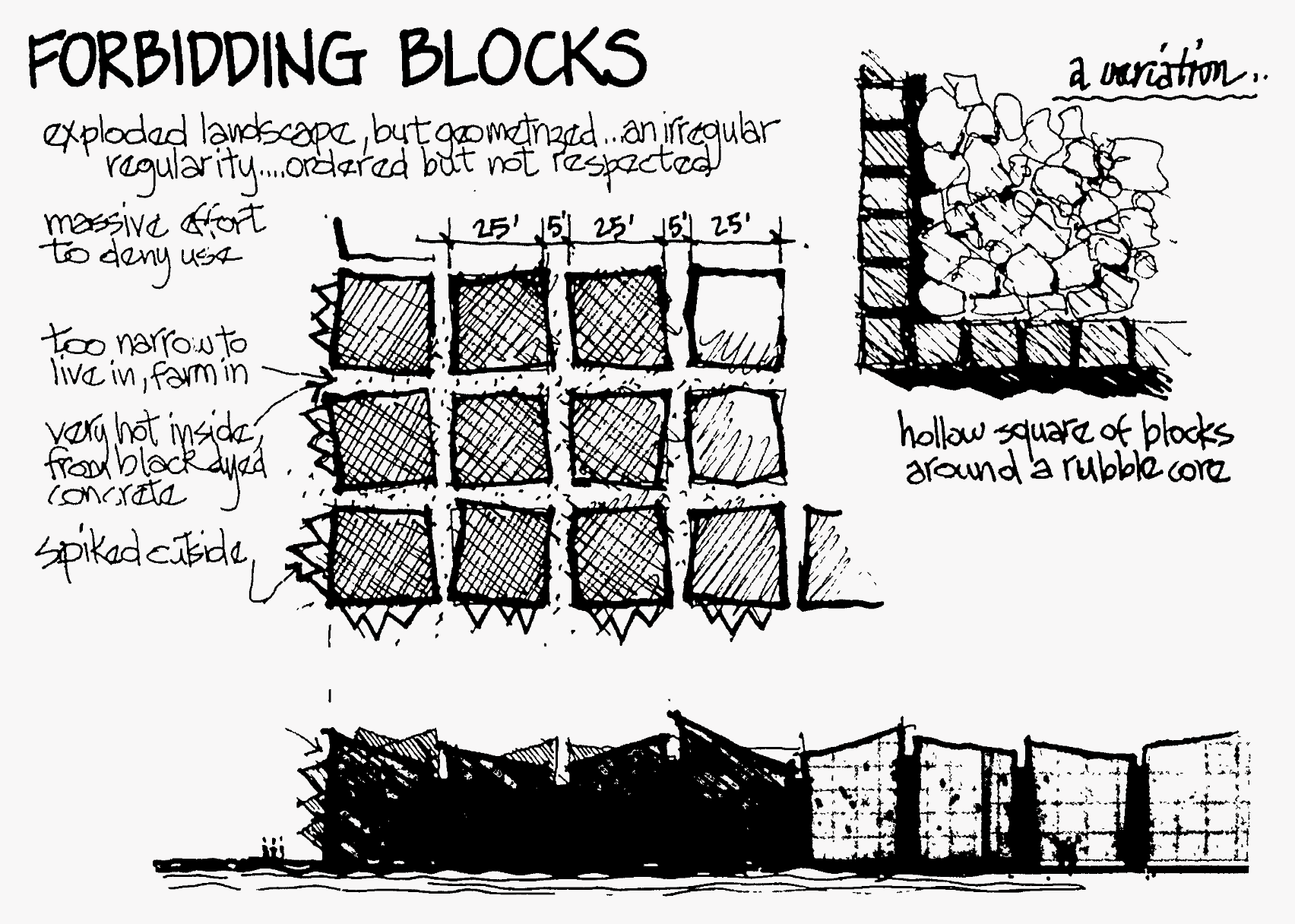
Other proposed ideas:
- Structures that generate haunting tones when blown by wind. Sounds generated by aeolian structures are often dissonant and mournful, which can be used to indicate a place of great foreboding.
- Obnoxious materials: bad smell that is enclosed into glass capsules that break when stressed; or materials with low-level radioactivity.
All these designs are expected to last for 10,000 years according to the report. The whole site is planned to be surrounded by berms.
Deatailed information
Detailed level II, III messages are engraved on stone walls of dedicated structures.
A kiosk incorporates a protective wall built around an inner granite wall containing the actual message. Messages are to be placed high up on the wall so as not to be covered by sand or defaced by people.

Level IV information is securely contained in concrete rooms buried underground increasing the chances to survive over time. The message includes a periodic table made of stone containing samples of the elements where feasible. Horizontal surfaces with messages are tilted to indicate their top and bottom.
The locations of nuclear waste sites around the world should foremost be displayed on a map.

The locations can be more accurately described using a not so obvious diagram where the WIPP site serves as the reference frame (dot number 0). The diagram consists of a partial circle to indicate relative latitude and a full circle to indicate relative longitude. If the circle has a diameter of 3 m, sites can be located with 4 km accuracy.
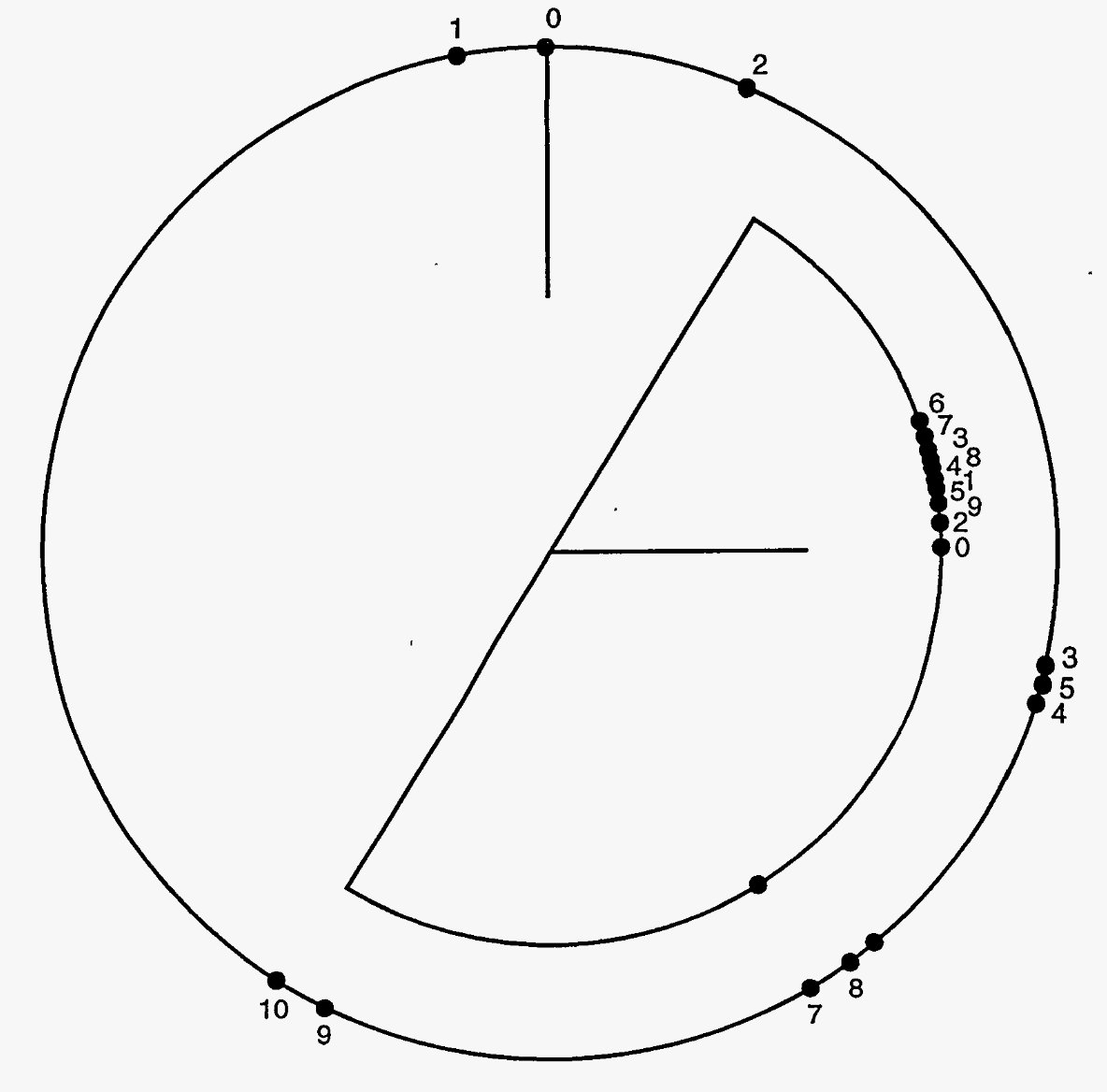
When considering timeframes spanning thousands of years, an effective method for telling time with an accuracy of 100 years is by observing the shapes and relative locations of constellations.

This phenomenon is caused by the precession of the earth’s north pole, which is currently pointed towards the star Polaris. The precession has a period of 26,000 years. A precession diagram showing a progression from a disgusted to a neutral face after 10,000 years and then to a content face should symbolize danger decreasing over time.

In order to ease the interpretation of the diagram, a long narrow structure which is aligned on true North can be added. Such a structure was actually used at an observatory built in 1727 in India.

2,000 AD

12,000 AD